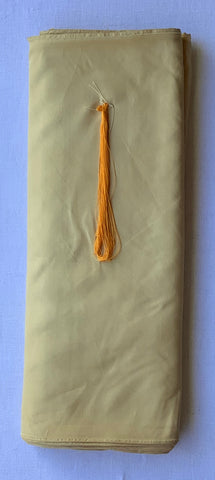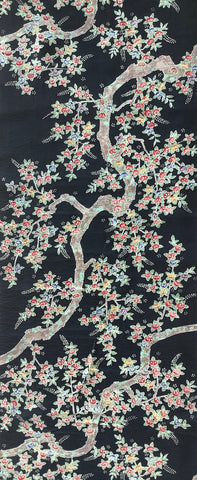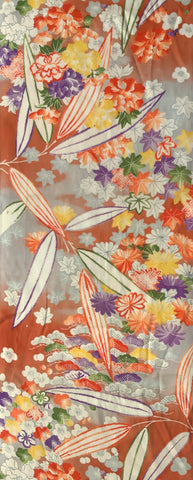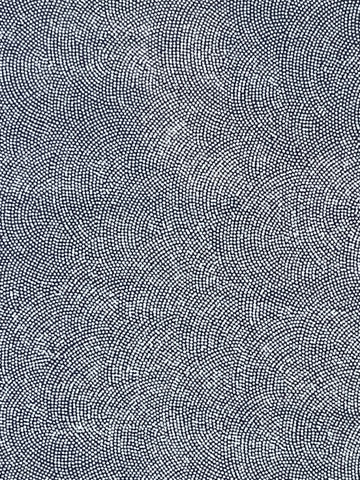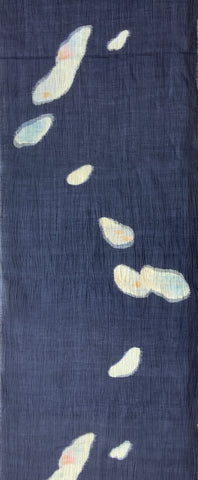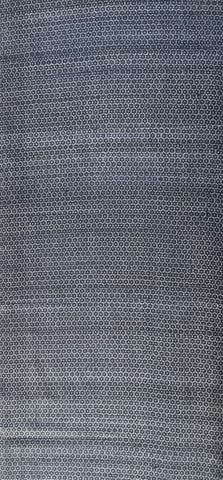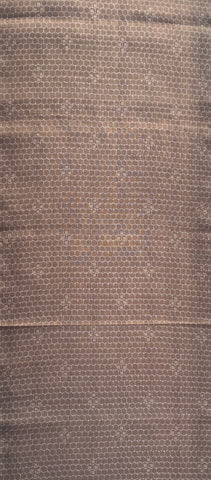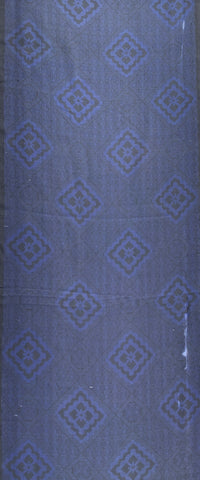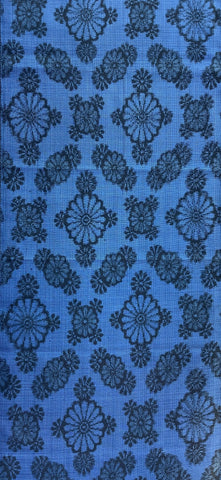7955:1960s Mud-Dyed Japanese Silk Doro-Ohshima Tsumugi, Geometric,59in. AraiHari
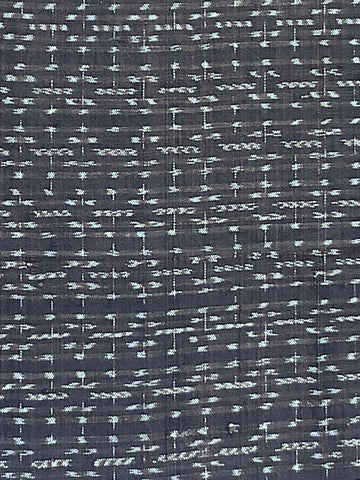
1960s Distinctive Japanese Textiles:
Catalog# 7955
Thin Summer Silk
Doro (Mud-dyed) Ohshima Tsumugi (pongee) Silk Fabric
Very Small (Komon) Staccato Lateral Lines:
Line Elements are: Classic Mini-Swallows-in-flight & Mini Arrow
All Lines in a Parallel Rectangualr Grid Arrangement
Width: 14.5 inches / 36.83 cm
Length: 59 inches / 149.86 cm
US$20.00 per piece
Plus Shipping

Item Details and Description
Fabric History/Pedigree: 1960s lightweight doro ohshima tsumugi (mud-dyed) fabric from kimono pieces from an Arai Hari (special Japanese kimono cleaner -- see info on Arai-Hari HERE from John Marshall, expert on Japanese textiles .
Fabric Description Details:
This thin, tanslucent summer silk lightweight piece is most unusual (in our experience), as it has micro sized (1/8th inch / 3.17 mm and smaller) designs of classic swallows-in-flight and arrow feathers; these elements are along thin lateral & vertical (grid) parallel lines; please see closeups; background is dark mud-brown (almost black) with the motifs in off-white to tan colors.
In these older mud-Ohshima fabrics, note how the pixelated fields render the motifs throughout all the various patterns, this pixelation is common in Tsumugi due to the weaving methods, but the lighter fabric shows the pixelation a bit more; The fabric is the same on both sides; ; Kimonos made from Doro-Ohshima Tsumugi are held in high regard among kimono traditionalists in Japan, given that the Imperial family has been known to wear such fabric in royal kimonos.
Colors: Please use our text color descriptions to complement your sense of the fabric, taking into account differences in contrast and color on various devices.
BACKGROUND JAPANESE TEXTILES CULTURAL NOTES:
There are various types of older Ohshima Tsumugi silk that involve tsumugi using mud, indigo, and grass or plants in the dyeing process.
To learn about the older Ohshima textiles, there are details on that aspect of Japan's special pongee silk-making process which can be found on the National Foundation for Promoting the National Costume of Japan website. The site explains the natural plant dyes and mud etc. used in making older (1960s and earlier) Ohshima Tsumugi silks, quoted here:
YokoDana Kimono
7973: 1990s Deadstock Roll(12yds)Japanese Cotton Solid Indigo Liner Fabric ForSashiko
$ 45.00
YokoDana Kimono
79722: 1980s Japanese Kimono Silk Fabric,47n.Pc.AraiHari,Komon Small Flowers on Black
$ 15.00
YokoDana Kimono
79721: 1980s Japanese Kimono Silk Fabric,62in.Pc.AraiHari,Komon Small Flowers on Black
$ 20.00
YokoDana Kimono
7968: 1980s Japanese Kimono Silk Fabric,59in.Pc.AraiHari,PeachTree, Leaves,Fruit
$ 20.00
YokoDana Kimono
7967 1930s-50s Japanese Kimono Silk Fabric Piece 58", ornate, floral Arai-Hari
Regular price $ 22.00 Sale price $ 18.00
YokoDana Kimono
7965:1980s Japanese Kimono Silk Fabric, Arai-Hari, 67in.Pc. Black w/white flower accents
$ 20.00
YokoDana Kimono
7964-2: 1980s Japanese Kimono Silk Fabric, Arai-Hari, 40in.Pc. Pixelated Waves
$ 15.00
YokoDana Kimono
7964-1: 1980s Japanese Kimono Silk Fabric, Arai-Hari, 62in.Pc. Pixelated Waves
$ 20.00
YokoDana Kimono
7962:1960s Mud-Dyed Japanese Silk Doro-Ohshima Tsumugi, Geometric,59n. AraiHari
$ 20.00
YokoDana Kimono
7954:1960's Japanese Silk Ohshima Tsumugi, 58in. Arai-Hari,Tortoise Shell Pattern
$ 20.00
YokoDana Kimono
7961:1960's Japanese Silk Ai-Ohshima Tsumugi, 55", Blue-Black Diamond Grid
Regular price $ 25.00 Sale price $ 12.50
YokoDana Kimono
7960:1960's Japanese Silk Ohshima Tsumugi, 58", Burgundy-Red, Floral Medallions
$ 25.00







